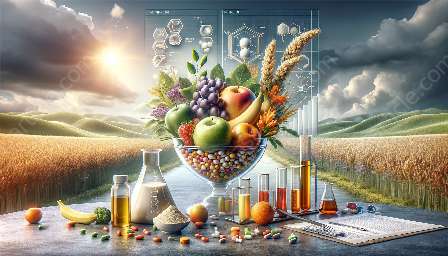It's no secret that the way we prepare and store our food can have a significant impact on its nutritional content. In this comprehensive guide, we'll delve into the fascinating world of nutrition science and explore how cooking, processing, and storage influence the nutritional value of our food.
Basics of Nutrition Science
To understand the impact of cooking, processing, and storage on nutrition, we first need to grasp the basics of nutrition science. Nutrition science is the study of how the foods we eat affect our health and well-being. It examines the role of nutrients in the body, how they are processed, and how they impact various physiological functions. By understanding these fundamental principles, we can better appreciate how cooking, processing, and storage can alter the nutritional composition of our food.
Nutrition Science Principles
Nutrition science is built on several key principles that underpin our understanding of how food and nutrients interact with the body. These include:
- Bioavailability: This principle examines how well nutrients are absorbed and utilized by the body. Cooking and processing can affect the bioavailability of nutrients, either enhancing or diminishing their absorption rates.
- Nutrient Retention: The way in which food is cooked and stored can impact the retention of key nutrients. Heat, light, and oxygen exposure can all contribute to the degradation of vitamins and minerals in our food.
- Protein Denaturation: Cooking can alter the structure of proteins, affecting their digestibility and the body's ability to utilize these essential macronutrients.
- Fat Oxidation: The processing and storage of fats can lead to oxidation, which can compromise the nutritional quality of the fats, leading to the formation of harmful compounds.
Cooking and Nutrition
Cooking is a fundamental part of food preparation, but it also has a profound impact on the nutritional content of our meals. The application of heat during cooking can lead to several changes in the food:
- Nutrient Loss: Certain vitamins, such as vitamin C and B vitamins, are sensitive to heat and can be lost during cooking. The longer the cooking time and higher the temperature, the greater the loss of these nutrients.
- Enhanced Nutrient Availability: Cooking can also improve the bioavailability of certain nutrients. For example, the lycopene in tomatoes becomes more available to the body when they are cooked, as the heat breaks down the plant's cell walls, releasing this antioxidant compound.
- Formation of Harmful Compounds: While cooking can enhance the availability of some nutrients, it can also lead to the formation of harmful compounds. For example, the high-temperature cooking of protein-rich foods can lead to the formation of advanced glycation end products (AGEs), which have been linked to various chronic diseases.
Processing and Nutrition
Food processing involves various methods to transform raw ingredients into edible products. While processing can improve food safety and extend shelf life, it also has implications for nutrition:
- Nutrient Depletion: Processing can strip foods of their natural nutrients. For example, the refining of grains removes the fibrous outer layers, along with key nutrients such as fiber, vitamins, and minerals.
- Fortification and Enrichment: On the other hand, processing can also be used to fortify or enrich foods with additional nutrients, addressing deficiencies and improving the overall nutritional profile of the final products.
- Added Sugars and Fats: Many processed foods contain high levels of added sugars and fats, which can contribute to excess calorie consumption and may displace more nutrient-dense foods in the diet.
- Preservation: Processing often involves the addition of preservatives to extend the shelf life of products. While this can reduce food waste, it can also introduce chemicals that may have implications for health.
Storage and Nutrition
Proper storage is essential for maintaining the nutritional quality of foods. Factors such as temperature, light exposure, and oxygen levels can all influence the stability of nutrients during storage:
- Vitamin and Mineral Retention: Exposure to light, heat, and air can lead to the degradation of sensitive vitamins and minerals. Proper storage, such as keeping foods in a cool, dark place, can help minimize nutrient loss.
- Fat Rancidity: Fats are prone to oxidation, which can lead to rancidity and a decline in the nutritional quality of foods. Proper packaging and storage conditions can help mitigate this issue.
- Microbial Contamination: Improper storage can promote the growth of harmful microorganisms, leading to foodborne illnesses and potential nutrient degradation.
Conclusion
The impact of cooking, processing, and storage on nutrition is a complex and multifaceted topic that intertwines the principles of nutrition science with practical food preparation and preservation techniques. By understanding the interplay between these factors, individuals can make informed decisions about how to best preserve and enhance the nutritional quality of their diets. Whether it's through mindful cooking methods, selective food processing choices, or proper storage practices, optimizing the nutritional value of our food is a crucial aspect of maintaining overall health and well-being.

